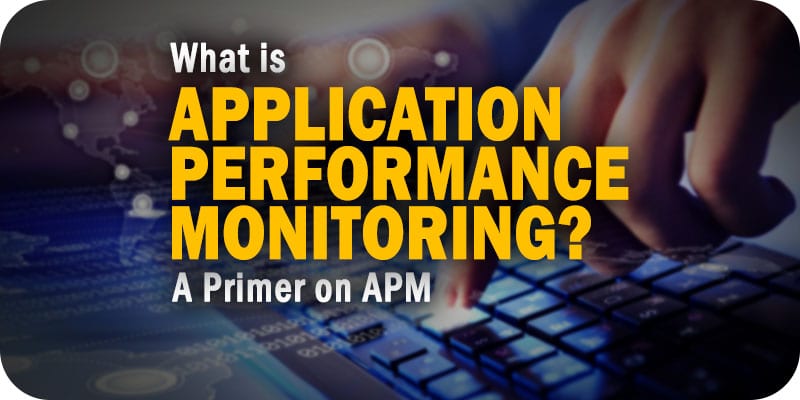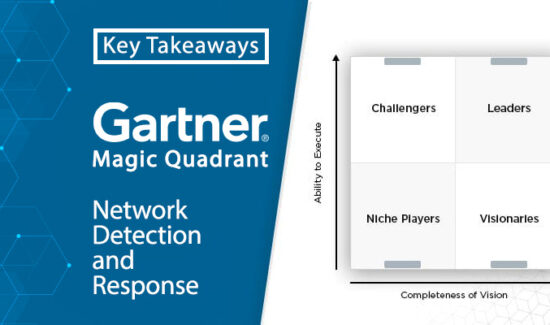What Is Application Performance Monitoring? A Primer on APM

This is part of Solutions Review’s Premium Content Series, a collection of contributed columns written by industry experts in maturing software categories.
 As modern business applications become more powerful, designed to tackle numerous essential tasks at once on multiple platforms, they can put an enormous strain on your company’s resources. Just about every part of any organization today requires the use of at least one business application, and many use multiple apps in the course of their daily routine. Applications are also becoming more sophisticated, being able to handle a number of complicated, powerful tasks that require a heavy amount of network bandwidth.
As modern business applications become more powerful, designed to tackle numerous essential tasks at once on multiple platforms, they can put an enormous strain on your company’s resources. Just about every part of any organization today requires the use of at least one business application, and many use multiple apps in the course of their daily routine. Applications are also becoming more sophisticated, being able to handle a number of complicated, powerful tasks that require a heavy amount of network bandwidth.
What happens, however, when an application starts performing poorly — or worse, stops performing altogether? Or if your business creates and sells applications to other companies, how can you ensure that your apps are performing to the level your customers expect?
With all of this in mind, technology vendors have increased their attention to providing application performance monitoring, or APM. This solution category has risen from a niche technology to become one of the most critical monitoring technologies for today’s enterprises. What is application performance monitoring, what are the key features of an APM solution, and why should your company consider deploying an APM tool into your infrastructure? Read on for an overview of this critical technology and the benefits it delivers to enterprises.
What is Application Performance Monitoring?
As its name implies, application performance monitoring solutions observe business applications to discover and report on performance metrics. An APM tool looks for instances where application performance is lagging behind on your infrastructure, or where it has to the potential to lag behind. Then, it alerts your IT team to any problems it discovers so you can correct the issue before it affects your applications further.
Some vendors focus on application security to ensure your infrastructure isn’t compromised. Others include digital experience and end-user monitoring to ensure applications are performing to user satisfaction. Regardless, application performance monitoring provides businesses with the ability to keep essential business apps running smoothly in their infrastructure.
The Key Features of APM Tools
While the basic capabilities of APM solutions cover performance monitoring, depending on the tool, users may also gain several other benefits. Key features of application performance monitoring tools include:
Key Performance Indicator (KPI) Monitoring
True to its name, APM tools track application performance via web and transaction monitoring to uncover KPI statistics. Your APM tool will analyze every instance and request for your applications to ensure that they are achieving their desired outcome. By correlating application performance metrics on a company’s KPIs, users can understand where (if anywhere) your applications are falling behind expectations. As application monitoring suites typically focus on a variety of metrics and pull deep-dive statistics on every portion of your infrastructure, your company can rest assured that an APM solution will report on the KPIs that matter most to your business.
Application Security
Many APM vendors augment their performance monitoring capabilities with security features, analyzing apps at the surface and code level to look for gaps in application security. Penetration testing and bandwidth monitoring can help network and IT engineers find potential security breaches and vulnerabilities. As with network monitoring solutions, APM vendors can look for instances of abnormal spikes or dips in application traffic — a potential indication of a security breach. Since modern APM solutions and vendors emphasize full visibility, they can monitor application security just as they would application performance.
Application Discovery and Tracing
Visibility of all your systems is not just a luxury anymore; it’s a critical function that no monitoring tool worth its salt should be without. APM tools must be able to locate every application on your company’s infrastructure and be able to analyze every one to collect and display performance statistics. Application tracing gives your monitoring system the ability to collect diagnostics on running applications, observing log files and looking for any signs of performance degradation or failure.
Digital Experience Monitoring
Synthetic application performance testing can only get you so far. Monitoring app performance from the end-user perspective is one of the most critical aspects of modern APM tools. If you lack insight into how apps are performing for actual people who use them, you won’t know what actual performance issues, minor or otherwise, currently affect your users. With digital experience monitoring capabilities, APM vendors are able to capture real data from actual users as they use your applications. This is a major help to DevOps teams and app developers who need information on live testing after their apps have been deployed.
Intelligent and Customizable Alerting
Application monitoring tools collect information and data on several different performance metrics — not all of which will be relevant to your company’s needs for your applications. That’s why modern APM solutions feature intelligent alerting features that allow you to designate which metrics are important for the tool to analyze. Customizable alerting features give your company more control over the alerts you receive from an APM solution, as the tool will only deliver alerts when it detects problems that matter to your company.
Why Should You Consider an APM Solution?
Application performance monitoring tools offer enterprises and IT professionals a method to ensure that the applications that perform critical business tasks are operating correctly. By deploying an APM solution into your infrastructure, your IT team will gain deep insights into analytics and metrics for your essential business applications. With security monitoring and management features for security professionals and configuration assurance testing for DevOps teams and developers, APM tools give you the power to observe your applications for security flaws and real-time user analytics and feedback.
Modern APM vendors also cover a variety of use cases to ensure that your applications are being monitored no matter where they are. Cloud-native applications and apps running in other specific environments can become a major blind spot for enterprises if they aren’t able to monitor them. With an APM solution, IT teams can observe applications deployed in the cloud or that feature complicated code and gather a full record of application performance across the entire infrastructure.




















